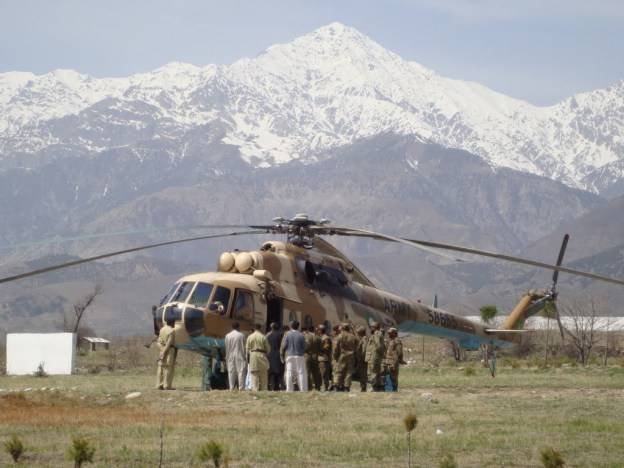FATA, despite having some administrative and political problems has been one of the most peaceful areas of Pakistan since 1947. The areas remained, generally, stable even when the war against Soviet Union in Afghanistan was in progress and later during the infighting among various Afghan groups. These were the days when about one-fourth of total five million Afghan refugees were living together with the local inhabitants. Even in the initial years after the US attack on Afghanistan in 2001, this tribal belt remained calm. However, with increased resistance in Afghanistan, the tribal areas have been gradually transformed into a war zone.
Today, FATA is being called a cause and hub of militancy by many, not only in Pakistan but in the entire region. While the Afghan government and the international community is blaming Pakistan for providing a safe haven to militants in its tribal belt, the government of Pakistan believes that the growing number of suicide attacks and other violent incidents have their roots in this area. Meanwhile, the people of FATA feel that they are being subjected to killings and forcible displacements not only by the US and NATO forces but by the Pakistani army and the militant groups. While the international community and global media are describing FATA as the cause of instability in the region, most people in the country and even outside believe otherwise, that is, it is basically the consequence of presence of foreign forces in Afghanistan.
The fundamental question is that whether FATA is a cause of instability in the region or is it a victim of what is happening around it? Of the many questions being raised about the situation in FATA and the strategy to move ahead, this question needs to be addressed before taking any other measure by all those who have any stakes in this area and who are genuinely interested in bringing peace to the region. The answer to this question, each entirely different from the other, should define the strategy for handling the situation.
Also, it would then be easier to answer a host of questions like, is deterrence, the best option or should it accompany diplomacy or precede it, or should it never be an option keeping in view the history of the area and the fact that a military action cannot be successful in bringing a sustainable change unless it has enough support of the people. Consequently, is it possible to take the people along without convincing them that the action is in their interest? Also related are the questions regarding the presence of foreign elements and about issues of economic infrastructure and development in the area. While foreign forces can afford to simply ignore the root-cause leading to such questions, should the Pakistan government also ignore them by allowing violations of its territory and killings of its own citizens? So, to devise a pragmatic strategy to move forward, it is crucial to understand the real situation in FATA and come up with clear answers. To address all these issues the government of Pakistan has taken a wise decision to form a high power committee to interact with the locals of the region and, in consultation with the elders of the area, and come up with proposals.
Recently the Prime Minister of Pakistan was briefed by the FATA reforms committee which gave very pragmatic suggestions enriched with the wisdom and feelings of tribal elders. Four options towards FATA reforms are: (1) Maintain status quo but introduce judicial and administrative reforms and increase focus on development activities. (2) Create FATA Council on the pattern of Gilgit-Baltistan. (3) Create a separate province of FATA. (4) Integrate FATA with Khyber Pakhtunkhwa province, each agency becoming a separate district and FRs integrated. However, from the wide ranging consultations undertaken by the committee, it emerged that there was wide consensus on the integration of FATA with Khyber Pakhtunkhwa, however tribal elders except in Kurram, Bajaur and FR Peshawar, wanted to retain the present special status.
The committee suggested that the highest priority, after the restoration of peace, should be on three aspects; (a) rehabilitation of the tribal people, (b) reconstruction of tribal areas on emergency basis and (c) revival of livelihood activities.
This uphill task will require huge financial resources and sharp coordination between all the Federal Agencies including SAFRON, FATA Secretariat, the Army formations and FWO and NLC. A detailed and comprehensive rehabilitation and reconstruction plan in this regard has already been launched by FATA secretariat to perform the tasks within the desired time frame. It was also suggested that foreign donors can be invited to raise the funds to meet the financial resources for the reconstruction plan. The ten year developmental program, suggested by the committee suggests the inclusion of major Infrastructure and irrigation projects, mineral development programs and integrated plans for health, education including establishment of university, medical and engineering colleges, vocational training and industrial zones with special incentives. Basic agenda of ten-year, rehabilitation, program is to bring FATA’s economic and social indicators at par with the rest of Pakistan.
It is very important to understand that what is the real situation and what can be the way forward in FATA. More than that, it is important that steps are taken to protect the country and its sovereignty. Today, Pakistan is encircled by all sorts of enemies and conspiracies and it is time that we put our heads together to integrate all corners of the country to build a stronger Pakistan.






